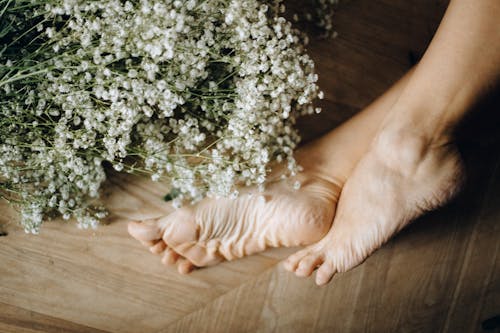Home remedy for corns and foot fungus

Corns are layers of skin that have become thicker than normal and can become scaly. They generally form on the heels and on the front of the feet due to pressure or friction, due to the use of inappropriate footwear. They constitute an aesthetic problem for the person.
For its part, fungi are a type of infection that, in addition to causing a bad smell, can alter the appearance of the nails. At times, they may become discolored and at others, they may become yellowish, uneven, and brittle. To treat them correctly it is necessary to go to a dermatologist.
How to remove calluses and fungus on feet?

To eliminate foot fungus, it will be essential to follow the treatment prescribed by the doctor. Although several home remedies are discouraged, as they can further aggravate the problem and cause complications, there is one that is recommended: aspirin.
For example, the 'exfoliating' mixture of lemon juice with aspirin can be too aggressive for the skin (even when it has corns) and, if we also rub the skin with a pumice stone, sandpaper or any other instrument to remove them, we can break the skin and cause cracks and wounds that can later become infected.
However, when not mixed with lemon juice or other elements, aspirin is useful and safe as a remedy for calluses and fungus on the feet, since salicylic acid promotes epidermal peeling effectively, as confirmed this article.
- You can prepare the aspirin remedy and apply it to the calluses and fungi on your feet, but you must pay attention to what reactions it produces. In case it causes irritation, discontinue use.
- The remedy is very easy to prepare: you simply have to crush a few aspirin (until it becomes a very fine powder), mix it with a little water (to form a paste) and apply it on the affected area. Then it would be allowed to act for a few minutes.
- To make the mixture a little more consistent and easy to handle, there are those who add some oil to the preparation, such as coconut oil. However, this is completely optional.
Other Options
If the doctor considers it, they may indicate ointments or other products for occasional use (antifungal creams, etc.), in specific doses. In addition, it will make certain recommendations regarding hygiene and personal hygiene that should be taken into account.Once the fungus problem has been addressed with the dermatologist, you can proceed to treat the corns. For this, the ideal would be to consult a podiatrist. The specialist will know how to deal with the problem in a safe way, with the most appropriate tools and procedures
What can you do at home?
In addition to following the guidelines that your doctor and podiatrist have given you, you can put the following tricks into practice:- Stop wearing the shoes that are hurting you.
- After removing footwear, place it in a window or open space to ventilate.
- Use templates (to protect the callus area).
- Leave your feet in the air for at least 15 minutes every day.
- Wear comfortable, padded shoes that are made with a material that allows perspiration. And if it is summer, it is preferable to wear sandals, so that the foot is well ventilated.
- Always wear clean socks and, if you have to, change the pair. Never leave wet socks or shoes on.
- Liquid patches are not recommended for all cases, therefore, you must consult your doctor before purchasing them.
- Soak your feet in a bucket with warm water (or hot to a bearable temperature), neutral soap and coarse salt for about 10 minutes. After this time, a foot is removed and the calluses are carefully filed with a pumice stone.
- You have to be careful when filing because if you do it too hard, we can break the skin and hurt ourselves.
- The ideal is to carry out this procedure regularly, until the callus is completely eliminated.
- After having removed the calluses and dead skin from the feet, you must dry them very well and apply a moisturizing cream on the feet. You could also use a little coconut oil to enhance the hydrating effect.
Patience is key in treatment

Speeding up the process with some mixes and sharp instruments can be counterproductive and risky, so avoid using it at all costs to avoid damaging your skin.




0 Comments